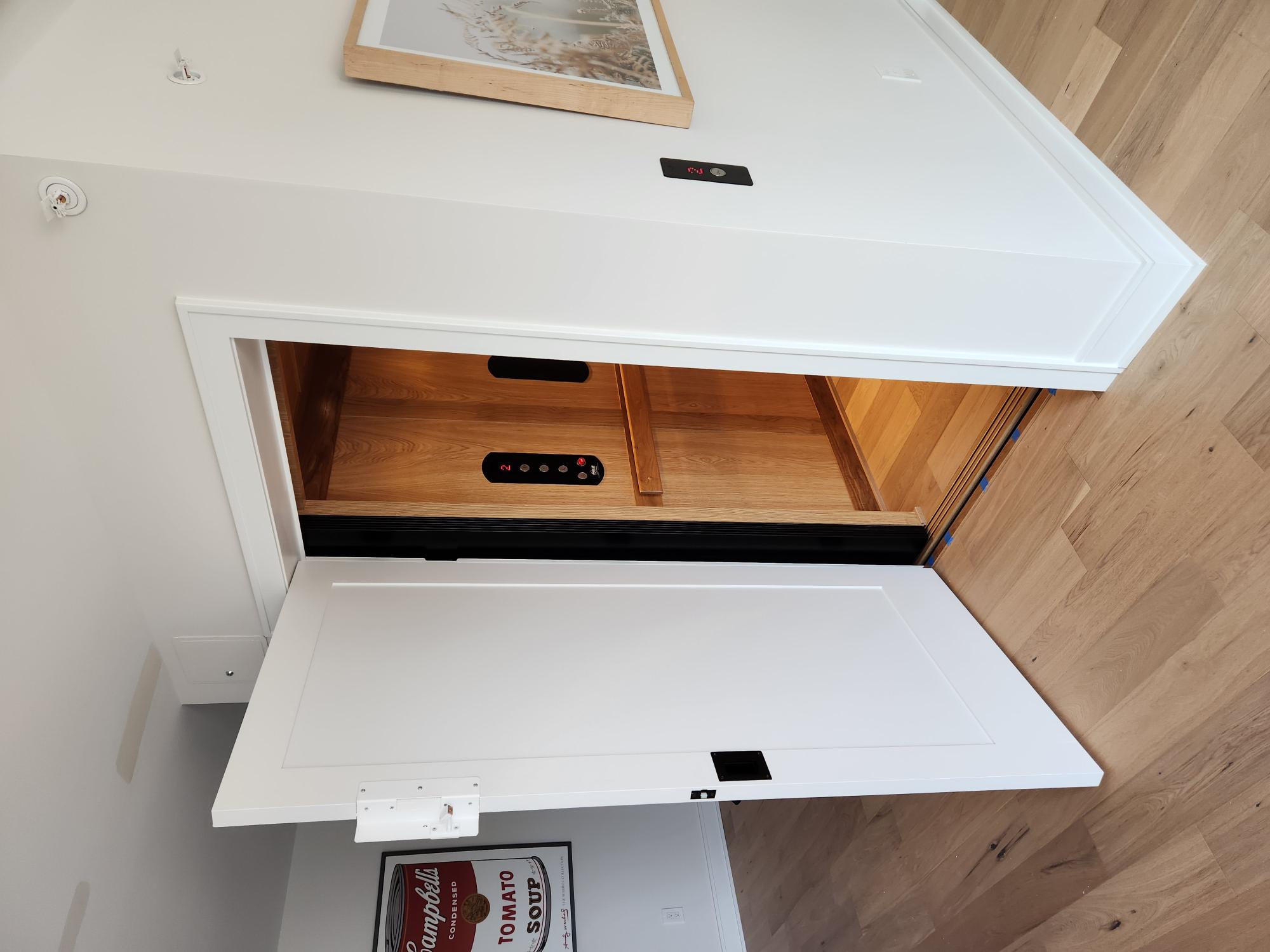Exploring the Globe of Elevators: Typical Issues Dealt With by Numerous Lift Devices
As we navigate through the vertical transportation systems of contemporary structures, elevators attract attention as a vital component of our lives. Nevertheless, behind their seamless procedure exists a globe of intricate devices that can often come across difficulties. From hydraulic lifts to traction systems and machine-room-less styles, each lift kind includes its set of usual issues. Recognizing these challenges is vital for making certain the smooth functioning of these essential systems. Allow's explore the intricacies that underlie the procedure of lifts and the prospective problems that can develop, clarifying the detailed internet of lift devices.
Hydraulic Lifts
Hydraulic elevators, frequently favored for low-rise buildings, make use of fluid stress to manage the activity of the elevator automobile (lift repair companies). This system involves a hydraulic pump pressing oil right into a cylinder, causing the elevator to relocate the desired instructions. While hydraulic elevators are recognized for their smooth and quiet operation, they do include their very own set of typical issues
One widespread trouble with hydraulic lifts is oil leak. Furthermore, issues with the control system, such as damaged shutoffs or a malfunctioning pump, can create interruptions in the lift's activity.
Routine upkeep and timely repair services are vital to make certain the smooth performance of hydraulic elevators. By dealing with these usual problems proactively, building proprietors can minimize downtime and ensure the security and performance of their upright transport system.
Grip Elevators
When taking into consideration vertical transport systems in structures, one more typical kind besides hydraulic elevators is the grip lift. Grip lifts operate using a system of ropes and weights that relocate the elevator car by clutching onto the hoist ropes. This system enables smoother and faster vertical transport compared to hydraulic systems.
One of the common concerns dealt with by traction lifts is rope wear. The consistent motion of the ropes within the traction system can bring about tear and wear with time, possibly creating the elevator to breakdown or come to be harmful for use. Normal assessments and upkeep of the ropes are vital to guarantee the lift's proper performance and security.
One more problem that grip elevators might experience is associated to the control system. Issues with the control system can bring about issues such as erratic movement, hold-ups in action times, or also full closures. Normal testing and maintenance of the control system are important to avoid such problems and ensure the elevator's reliability.
Machine-Room-Less (MRL) Elevators

One of the essential elements of MRL lifts is the compact gearless traction machine that is mounted within the hoistway. This maker successfully drives the lift automobile without the demand for cumbersome equipment discovered in traditional traction lifts. In addition, MRL elevators typically make use of a weight system to balance the auto, more improving their power performance.
Regardless of their advantages, MRL lifts might face difficulties related to maintenance and repair work because of the restricted space for equipment installment. Availability for servicing elements within the shaft can be restricted, needing specialized training for specialists. Appropriate upkeep schedules and regular evaluations are important to guarantee the continued smooth operation of MRL lifts.
Overloading and Weight Restriction Issues
Are elevators geared up to manage excess weight lots efficiently and safely? Straining and weight limit problems are vital issues in elevator operations. Elevator producers we maintain lifts style lifts with specific weight capabilities to guarantee guest safety and tools durability. Going beyond these weight limits can result in numerous troubles, including mechanical failures, hold-ups, and security risks.
When lifts are overwhelmed, it places extreme strain on the electric motor, wires, and other elements, possibly causing failures or malfunctions. Safety mechanisms such as sensing units and overload sensing units remain in place to protect against elevators from moving if they find excess weight. In addition, exceeding weight limits can lead to enhanced energy consumption and damage on the elevator system.
To reduce overwhelming concerns, building supervisors ought to prominently show weight limits in lifts and inform passengers on the significance of adhering to these restrictions - lift repair companies. Routine maintenance checks by certified technicians can additionally help make certain that lifts are operating within secure weight criteria. By resolving overloading and weight limitation concerns proactively, building proprietors can enhance elevator safety and efficiency
Electric System Failings
Exceeding weight restrictions in elevators can not just lead to mechanical concerns but additionally possibly contribute to electrical system failings within the lift facilities. Electric system failures are an important issue in lift procedure, as they can trigger unexpected shutdowns, malfunctions, or also safety hazards.
In addition, power rises or fluctuations in the electric supply can likewise disrupt the lift's procedure, impacting its performance and security. These electric disturbances can harm sensitive lift elements such as control board, motherboard, or sensors, bring about system failings. Normal maintenance and assessments are critical to recognize and resolve prospective electrical issues promptly, making sure the secure and efficient operation of lift systems. By sticking to weight limits and carrying out routine electric system checks, building proprietors can mitigate the threat of electrical failures in elevators.
Verdict

Hydraulic lifts, typically liked for low-rise buildings, use fluid pressure to regulate the motion of the elevator car.When considering vertical transportation systems in buildings, one more typical type apart from hydraulic elevators is the traction elevator. Traction lifts operate using a system of ropes and weights that move the elevator automobile by gripping onto the hoist lift repair near me ropes. Unlike london lift company standard lifts that need a separate maker area to house the equipment, MRL elevators incorporate many of the parts within the shaft, removing the demand for a committed maker space.In conclusion, lifts deal with typical problems such as hydraulic breakdowns, traction system failures, and electric system problems.
Comments on “Discover the most effective Disabled Platform Lifts Prices UK for Residential and Commercial Use”